How to Train a Superhuman: The Battle for Your Consciousness
Nietzsche, Gnosis, and Breaking from the Final Enclosure
Hey, Slick!
I was just telling you about Heidegger and the whole issue with modernity: modernity entraps us into a way of seeing the world. Apparently, the right brain doesn’t count for much these days; intuition, connection, and direct experience don’t pay the bills.
So what does Friedrich Nietzsche have to say about all this? And what’s his answer to Heidegger’s call for poets—those who might break the spell of modernity?
Friedrich Nietzsche shattered the illusion—or so we say. But 2,000 years before him, the Gnostics had already seen it all. And they weren’t misunderstood; they were exterminated. Maybe that’s why we don’t talk much about them anymore, Slick...
I. The Battle for Your Consciousness: A Question of Perception
What does it mean to see the world clearly? What does it mean to truly think for oneself? These were the questions that Nietzsche and Heidegger wrestled with—not just as philosophical abstractions, but as the key to escaping the structures that condition our perception.
Heidegger saw the modern world as increasingly enclosed by Gestell, a totalizing system that reduces everything—including human beings—to a resource to be optimized, controlled, and managed. Yet Heidegger left us waiting, hoping for Being to reveal itself anew. Nietzsche, by contrast, offered a path forward—not a passive anticipation, but a radical self-overcoming of inherited thought.
The Gnostics said the world was a prison, ruled by false gods who passed themselves off as creators. Now, in the era of artificial intelligence, algorithmic perception, and the commodification of mysticism, we are faced with a new enclosure—not of land or labor, but of consciousness itself. And the new Archons wear the faces of billionaires.
The final question is no longer whether we will be controlled, but whether we will train ourselves to escape.
Yet Nietzsche has been misunderstood, deliberately distorted, and repurposed—most notoriously by the Nazis, who transformed his concept of the Übermensch into a justification for racial supremacy and brute domination. But Nietzsche’s vision was not about power in the sense of conquest—it was about transcendence of inherited frameworks.
This is how to train a superhuman—not a machine-enhanced, corporate-funded, AI-assisted immortal, but something far more dangerous to them: a human being who sees beyond the last illusion.
This is the path to becoming the true Übermensch.
II. Nietzsche’s Übermensch as True Escape from Gestell
The Übermensch does not simply escape Gestell; he sees differently. He is not trapped in the dialectics of rebellion vs. submission, progress vs. tradition, acceleration vs. collapse—because he has left the framework altogether.
Nietzsche, like Heidegger, diagnosed the failure of modernity—but where Heidegger left us waiting for Being to reassert itself, Nietzsche proposed an active path forward. He saw the death of God not as nihilism’s victory but as an opportunity for the greatest creative act: the self-overcoming of man.
The Übermensch does not seek control over the world—he seeks to break perception out of its inherited constraints. His power is not in force but in seeing the illusion and choosing to exit it.
The world that Nietzsche attacked—the world of slave morality, ressentiment, and imposed values—is the same world we now inhabit, rebranded through digital utopianism. AI-generated realities, corporate-funded spiritual enlightenment, and dopamine-engineered escapism all promise a form of transcendence, but only within the existing structure. The modern would-be Übermensch is not meant to leave the game; he is meant to win it on their terms.
But Nietzsche’s Übermensch does not win the game.
He exits it entirely.

And here, Nietzsche meets Gnosis.
Nietzsche declared the death of the God in whose name the Gnostics were murdered. But if the Gnostics were right, then the God he killed was never the true divine—only the Demiurge’s great deception. The real God was never in the prison to begin with. So maybe Nietzsche wasn’t the executioner. Maybe he was just the one who shattered the last illusion of the warden.
III. Gnosis: Seeing Through the Counterfeit Reality
Gnosis is not just knowledge. It is not information. It is direct perception of the false world you inhabit. It is the moment the veil is lifted, and you see that what you thought was real was merely a construct, designed to keep you inside it.
So let me tell you about the Gnostics, Slick...
Who Were the Gnostics?
The Gnostics were seekers, mystics, but if you’ve heard of them it’s probably as heretics who rejected the authority of the material world. They saw this world as a prison, an elaborate deception crafted by a lesser god—the Demiurge—who claimed to be the true Creator but was, in fact, an impostor.
For the Gnostics, salvation was not about obedience, faith, or moral purity—it was about waking up. Gnosis was the direct knowing, the unmediated vision of reality behind the illusion.
This was the original heresy: the claim that the highest truth was not to be found in temples, laws, or scriptures, but in inner revelation.
Lucifer’s Rebellion: The Last Trap
The Luciferian impulse in Gnosticism is to reject the false god and reclaim direct access to divine knowledge. But Lucifer makes a mistake—he still defines himself against the Demiurge, still fights within the system. His rebellion locks him in opposition, ensuring he never actually leaves.
Lucifer remains in the game.
And as long as you fight within the game, the game owns you.
The true Gnostic initiate does not rebel. He does not seek revenge against the false god. He simply walks away.
This is the difference between false light and real illumination.
Still chained to the Demiurge, you fight against the system, convinced that victory means liberation. But rebellion assumes the system has power.
The Übermensch does not fight the prison; he walks away from it.
And those who walk away break the system entirely.
The Spiritual Dimension: The Übermensch as Gnostic Initiate
When Nietzsche declared that 'God is dead,' he wasn’t simply attacking religion—he was diagnosing the collapse of an entire way of structuring reality. But the real danger wasn’t just the death of God; it was what came after: the desperate need to replace Him. The weak, the frightened, the Last Men—they would rush to fill the void with new gods, new beliefs, new certainties. But Nietzsche’s path was different. His answer was not to replace belief with belief, but to move beyond belief entirely—into sight.
This is where Nietzsche parts ways with both dogmatic atheists and religious traditionalists. For him, the goal is not simply to reject belief but to outgrow it—to cultivate a way of seeing reality so clearly, so directly, that belief itself becomes unnecessary. The Übermensch does not believe in truth—he sees it, lives it, embodies it. He does not believe in life’s meaning—he creates it. This shift from belief to sight, from doctrine to direct experience, aligns Nietzsche with the Gnostic tradition: the true knower does not accept the world as given; he sees through it, past the Demiurge’s illusions, to the deeper reality beneath.
In this way, Nietzsche’s path is not nihilism—it is a radical act of re-enchantment, but one that refuses to retreat into comforting myths. The task is not to believe in a better world—it is to make one. And to do this, one must first become a seer, someone who has confronted reality so fully, with such terrifying clarity, that they are no longer bound by inherited values or external authorities. This is what it means to overcome.
But seeing through the illusion is not enough. The question remains: What now? Nietzsche shattered the illusion, but he did not tell us what to build. The escape from Gestell and the Demiurge is an initiation, but the next step is transformation. This is where Gebser, McGilchrist, and Lachman give us the roadmap.
IV. Gebser, McGilchrist, and Lachman: The Roadmap to the Integral Mind
So, where does that leave us, Slick? Well, quite far away from lifting the veil. Modernity has brought us quite far from the wisdom of gnostic initiates, which we mostly re-discovered when their founding texts were literally unburied.
We're much closer to Nietzsche's Last Man.
The Last Man: The Dead End of the Mental-Rational
Nietzsche’s Last Man is not a tyrant, not a warrior, not a philosopher. He is a consumer—one who laughs at the Übermensch, thinks transcendence is cringe, and demands nothing but comfort. He lives in a world of managed perception, where pain is unnecessary, and nothing happens because everything has already been decided.
And this is exactly where Gebser placed us at the end of the Mental-Rational Age.
The Mental-Rational Age, which gave us science, structure, and the dominance of reason, is now collapsing into its decadent phase:
Hyper-logic replaces lived experience.
Abstraction takes priority over reality.
Technocracy rules over intuition.
Systems of control replace true knowledge.
The Final Enclosure is not an empire. It is a world where nothing happens, because everything has already been decided": the Last Man stays in the Mental-Rational because it is all he knows.
If Nietzsche and Gnosis show us why we must escape, Gebser, McGilchrist, and Lachman show us how to train perception itself to leave the final enclosure.
And because it’s not just about external control, but a perceptual framework so total that most never realize they are inside it, true freedom begins not with rebellion, but with seeing beyond the system itself. The Übermensch steps into the Integral—because he has trained his perception to see beyond the system.
Gebser: Breaking the Mental-Rational Cage
Jean Gebser mapped the evolution of human consciousness—from the archaic to the magical, to the mythic, to the mental-rational, and finally, to the Integral.
Each shift was not just a change in thinking—it was a change in seeing. A transformation of perception itself.
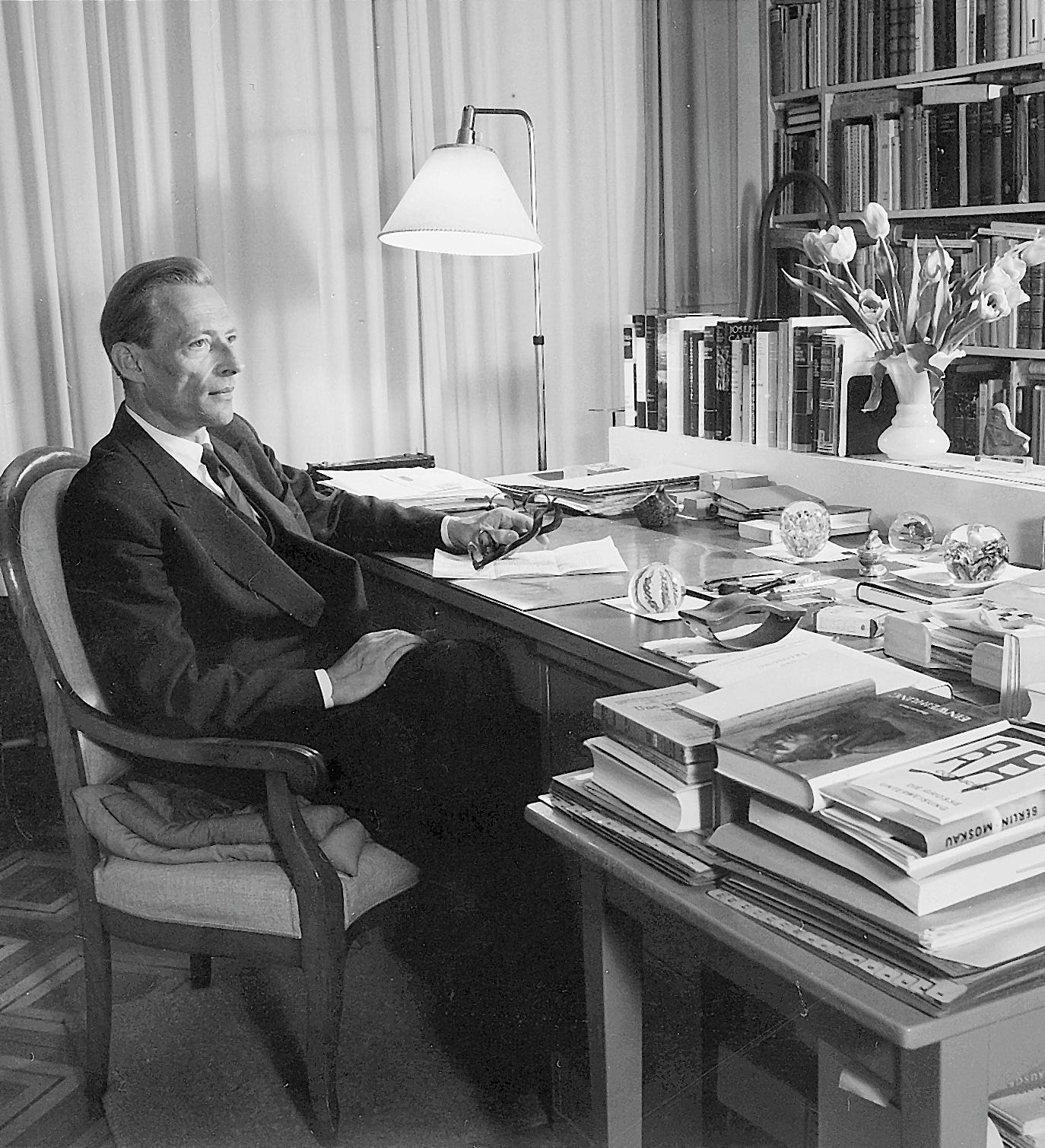
The Integral Mind is not an accumulation of more knowledge. It is not a refinement of the Mental-Rational. It is a rupture—a step beyond.
The Übermensch is Integral because he no longer sees through the fractured lens of the old paradigm. He has trained his perception to move beyond opposition, beyond reaction, beyond the rigid categories of the system.
To escape Gestell, we do not return to myth—we integrate it with reason, transmuting perception to something beyond both.
McGilchrist: Reclaiming the Right Brain
The battle for consciousness is not just external—it is internal, fought between the hemispheres of the brain.
The Left Brain categorizes, isolates, and dominates—the realm of solar logic, control, and systemization.
The Right Brain sees holistically, relationally, directly—the realm of lunar intuition, integration, and receptivity.
The Left Brain gave us Gestell—the final triumph of total abstraction over direct experience.
The Mental-Rational mind is a Left-Brain structure—it breaks reality into data, into systems, into logic divorced from meaning.
McGilchrist warned that civilization itself has become left-brain dominant—unable to see the whole, trapped in its own categories.
And the Übermensch, like the Integral Mind, is a restoration of Right Brain perception:
Seeing reality as it is, not as the system defines it.
Recognizing the illusion of control.
Reclaiming direct experience over abstraction.
This is why Gnosis is always a heresy—it is an act of seeing through abstraction. It is the reactivation of what was closed off.
Lachman and the Alchemical Path: The Counterfeit Awakening
If Gnosis is about seeing through the illusion, and Gebser and McGilchrist show how perception is conditioned, then Gary Lachman brings us to the final key—the path of alchemy, Hermeticism, and true esoteric transformation.
But what does Gnosis have to do with Alchemy?
Everything.
Alchemy is not just a proto-science or a chemical process. It is the transformation of the self—the purification of perception, the Great Work of turning lead into gold.
The lead is the conditioned mind, trapped in Gestell, in the Mental-Rational Age.
The gold is the Integral mind, liberated from the system, able to see reality as it truly is.
This is why alchemy was always about perception. The prima materia (the "base matter" of transformation) was never just about substances—it was about consciousness itself.
This is where Gary Lachman becomes key. His work on Hermeticism, esoteric philosophy, and counter-initiations bridges Gnosis with the Alchemy of Perception.
Lachman traces how Western esoteric traditions—which once sought personal transformation and direct experience of higher realities—have been co-opted by those seeking power, control, and optimization instead of liberation.
This is the difference between true initiation and counterfeit awakening.
Alchemy as Integration vs. Domination
The true alchemist does not seek to dominate reality—he seeks to transmute himself.
The Demiurge and the Left Brain are the same force—fragmenting perception, dividing reality, enforcing control. The Gnostic vision and the Right Brain are also one—seeing reality as a whole, rejecting false systems. The alchemical process is the reconciliation of these opposites.
Lachman explores two paths of initiation:
Authentic initiation: transformation of perception, dissolution of the ego, confrontation with the unknown, integration of opposites. This is the path of alchemy, Hermeticism, and true esotericism.
Counter-initiation, which mimics spiritual transformation but twists it toward power and control. These are the false awakenings, synthetic transcendences, and elite-managed spiritual experiences. They give the illusion of gnosis while reinforcing the existing system.
The Last Man vs. The Alchemist
The Last Man does not seek transmutation. He avoids discomfort, suffering, and change.
The Alchemist, by contrast, enters the fire willingly, knowing that only through dissolution can he be reborn.
This is the philosopher’s stone—not a substance, but a state of being, an awakened mind.
The Mental-Rational Age has tried to sterilize alchemy, turning it into chemistry, productivity, and self-optimization.
But the true Great Work was always about unifying Sun and Moon, Rational and Intuitive, Left and Right Brain.
And this is where Lachman’s warning about counter-initiations becomes prophetic.
The Counterfeit Alchemists: Billionaire Mystics and the Rebranding of Gnosis
Lachman warns that modern mysticism—especially in the hands of Silicon Valley and billionaire visionaries—is often a counterfeit awakening:
A repackaged esoteric path that grants its initiates optimization, power, and control rather than true liberation.
But this is not just a distortion of mysticism. Lachman, following Guénon, warns that counter-initiation is not just a dilution of esotericism but its total inversion. True initiation dissolves identity; counter-initiation fortifies it. Where the adept should confront the abyss, the counter-initiate builds a bridge over it—an illusion of transcendence that leads nowhere.
True esotericism was a path of dissolution—the burning away of false identity, of the self that clings to control. It was dangerous, destructive, and profoundly transformative.
Corporate esotericism is its shadow: a mysticism that optimizes the self rather than annihilates it, turning alchemy into productivity, gnosis into a marketable framework.
The modern initiate does not enter the abyss. He schedules it for next quarter’s leadership retreat.
This is Lachman’s warning: the final counterfeit initiation is not ignorance. It is a simulation of enlightenment that reinforces the existing system.
And this is why the billionaire mystics will never escape.
Because to escape, they would have to let go. And when the fire comes, those who refuse to burn will be consumed in another way.
V. Billionaire Mystics: The Psychedelic Bypass and the Trap of Synthetic Transcendence
The billionaire mystic is not seeking transformation. He is seeking leverage.
Lachman describes counter-initiation as a path that imitates true mysticism but never forces real surrender. This is the path of the billionaire mystics.
They do not dissolve the ego—they expand it. They do not seek to escape Gestell—they seek to become its masters.
Their goal is not liberation but optimization.
Silicon Valley’s Synthetic Mysticism
The tech elite’s engagement with spirituality is not about surrender but optimization:
Luxury ayahuasca retreats—where psychedelic enlightenment is curated for peak performance.
Psychedelic startups—where spirituality as a new investment sector.
Personalized mystical “coaching”—where spirituality is just another executive advantage.
In Palo Alto, the modern mystic is not a seeker of truth but a venture capitalist optimizing his focus. Ayahuasca ceremonies are scheduled between board meetings. The Great Work is not personal transformation but the next billion-dollar startup.
The Commodification of Ancient Knowledge
How elite circles appropriate and strip traditions of their transformative power:
Luxury-brand “indigenous” wisdom—where billionaires extract shamanic rituals while avoiding their ethical weight.
Silicon Valley monks—where Buddhism is neutered into a productivity tool.
Mysticism-as-a-Service—where insight is repackaged as bespoke spiritual consulting.
The Hermetic texts once spoke of transmutation—the sacred union of opposites. Today, Silicon Valley transmutation is a private meditation coach, a $10,000 psychedelic therapy session, and a 'quantified self' ritual tracking HRV and REM cycles.
Ritual Without Sacrifice: The Tech Elite’s Counterfeit Initiation
Why billionaire spirituality never dissolves the ego—it reinforces dominance instead:
Ketamine microdosing—for high-performance detachment rather than ego death.
Burning Man’s metamorphosis—from counterculture to elite networking retreat.
The "Hero’s Journey" as a business model—where transformation becomes an executive training module.
True alchemy demands suffering—the purification of the self through dissolution. But the billionaire mystic never burns. He wants the Hero’s Journey without the abyss, the shamanic initiation without the sacrifice. He takes the gold and leaves the fire behind.
This is the final trap—a version of enlightenment that ensures they stay in control.
They are not alchemists seeking transmutation; they are counterfeit mystics trying to game the divine.

They seek transcendence as another form of leverage.
But true gnosis burns away power.
This is why they can never follow the real path.
Because true awakening is incompatible with control.
VI. From Fire to Form: The Last Threshold
Nietzsche shattered the illusion.
But what comes after the illusion is gone?
Seeing through the counterfeit reality does not set you free. It only leaves you standing in the ruins of an old world with nothing but raw perception and the weight of your own will.
The final enclosure is not one of land, or labor, or law. It is of perception itself.
The world you thought you left behind still lingers in how you see. And that is the last trap.
Lucifer’s mistake was thinking rebellion was escape. He played inside the system, raged against it—never realizing that by fighting within it, he remained bound to it. The Übermensch does not fight the illusion: he leaves it.
So what do we do with that?
This is where Nietzsche, Gebser, and the Gnostics all meet. Escape is not enough. The world of the Demiurge, the Mental-Rational, Gestell—it will collapse on its own. The real question is: what comes next?
Jesus taught in parables because truth cannot be given—it must be realized. Nietzsche wrote Zarathustra in riddles because philosophy must not be memorized—it must be lived. The Gnostics did not stay to argue with the Archons or tear down their kingdom; they turned their backs on the counterfeit world and walked away.
But walking away is only half the journey.
This is why alchemy is not just fire. It is transmutation: the raw materials of what was burned must be forged into something new.
And this is where the last choice is made:
Do you remain in Plato’s Cave, adjusting the shadows to your liking? Do you redecorate the walls, optimize the fire, ensure your shackles are comfortable?
Or do you turn around?
Do you leave the Cave entirely?
Do you step beyond the last enclosure, past the last illusion—not into nothingness, but into the terrifying responsibility of creation?
Do you shape your own values, not as a rebellion against the system, but as something that never needed the system in the first place?
Do you walk away, knowing there is no path to follow?
There is no middle path. You either leave the Cave—or you redecorate it.
This is not a thought experiment, Slick. It is the task of a lifetime.
See you outside?
Until then,
Stay Slick.
Well, almost. Next:


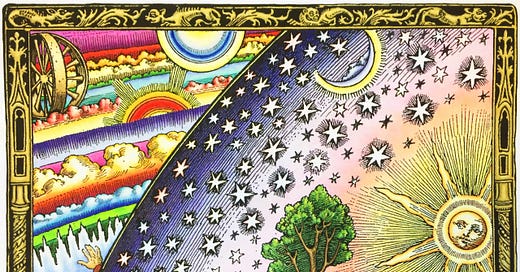


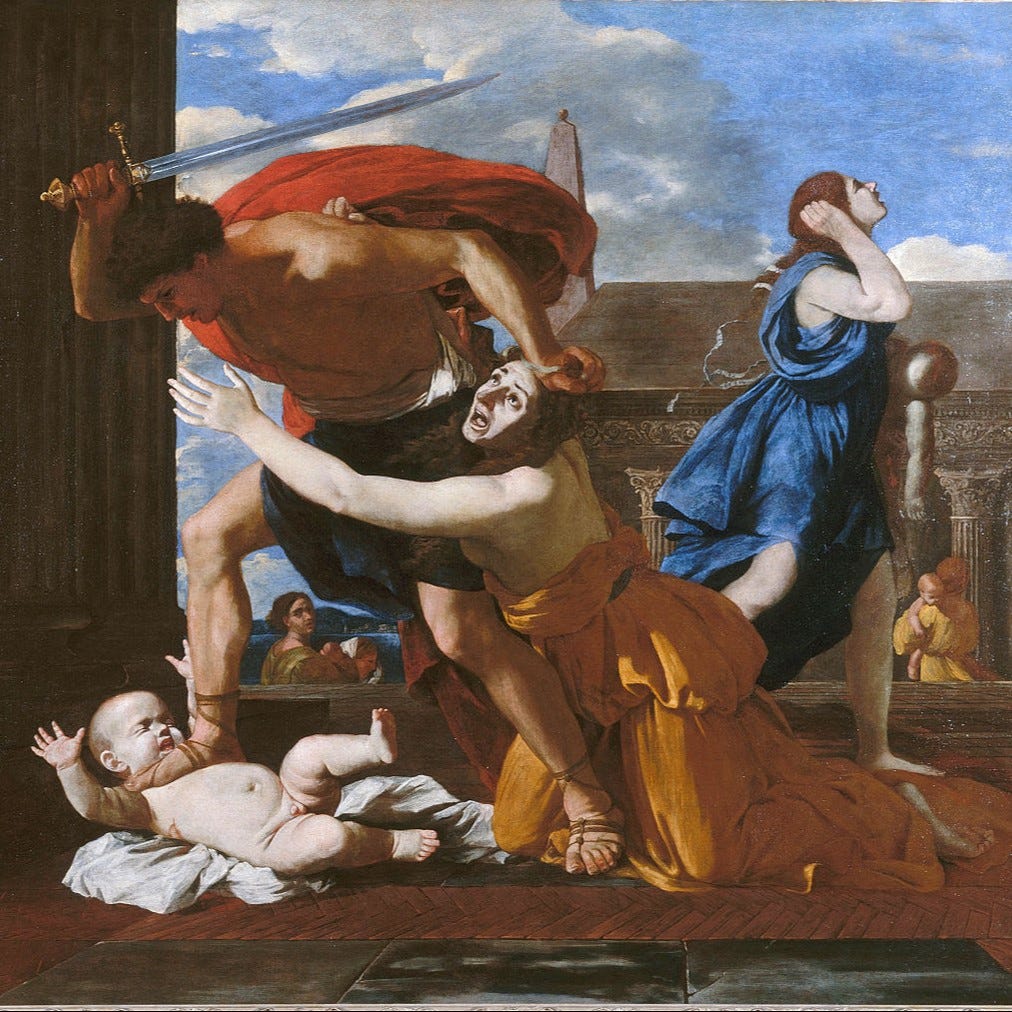
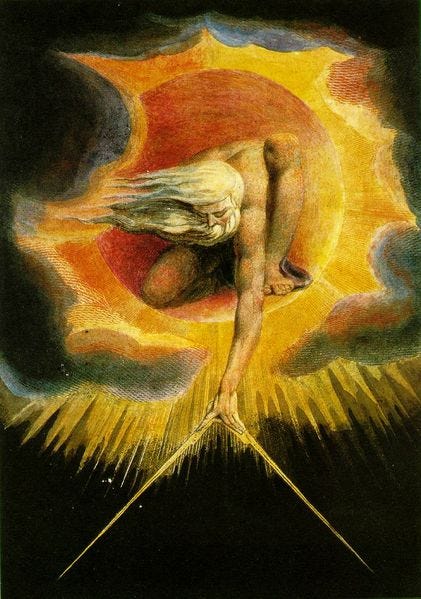
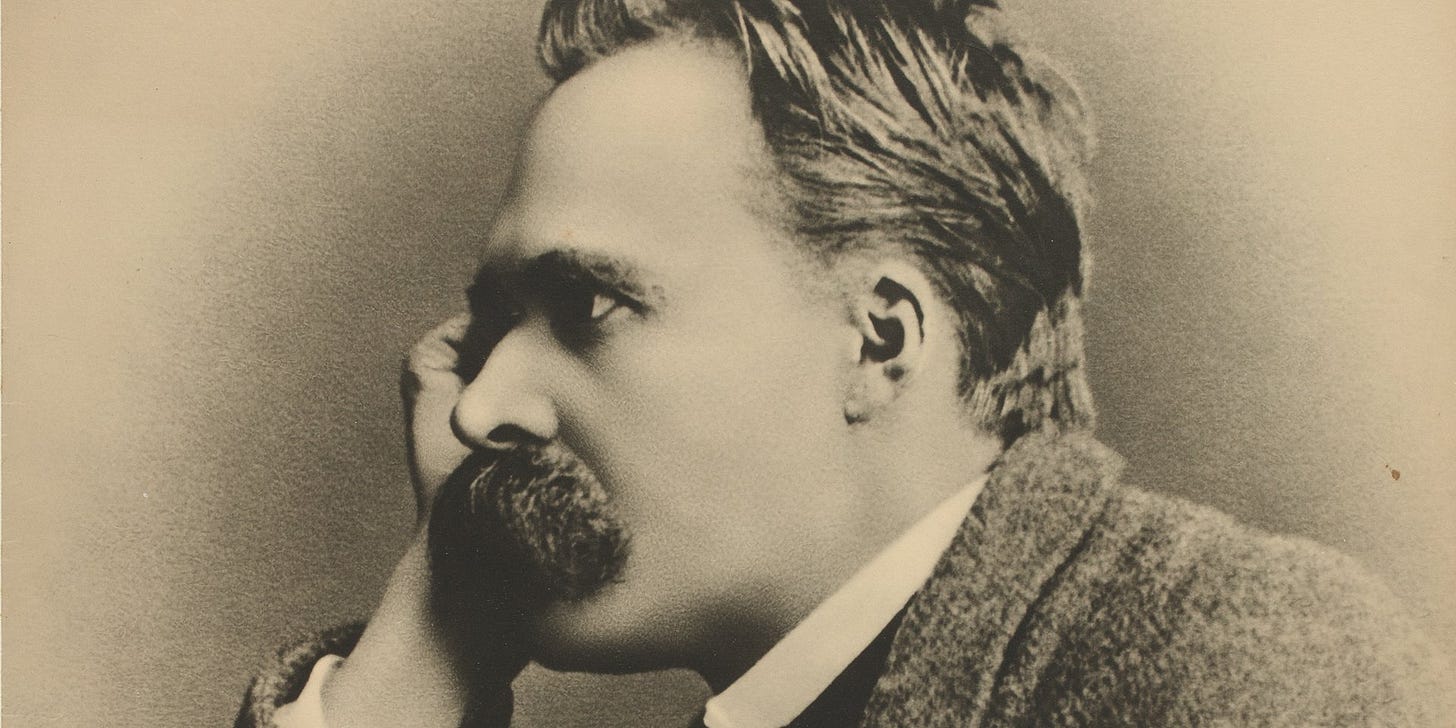

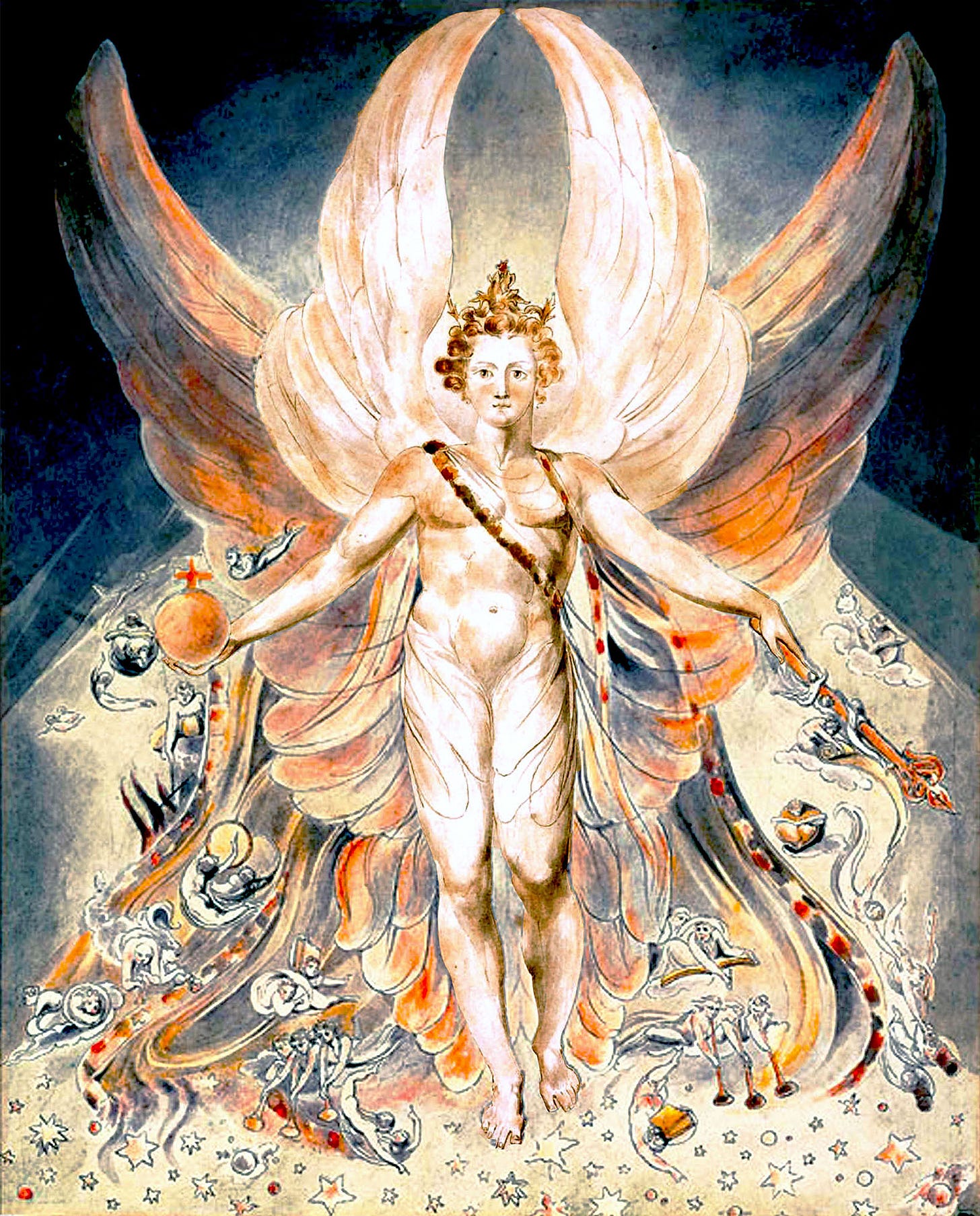

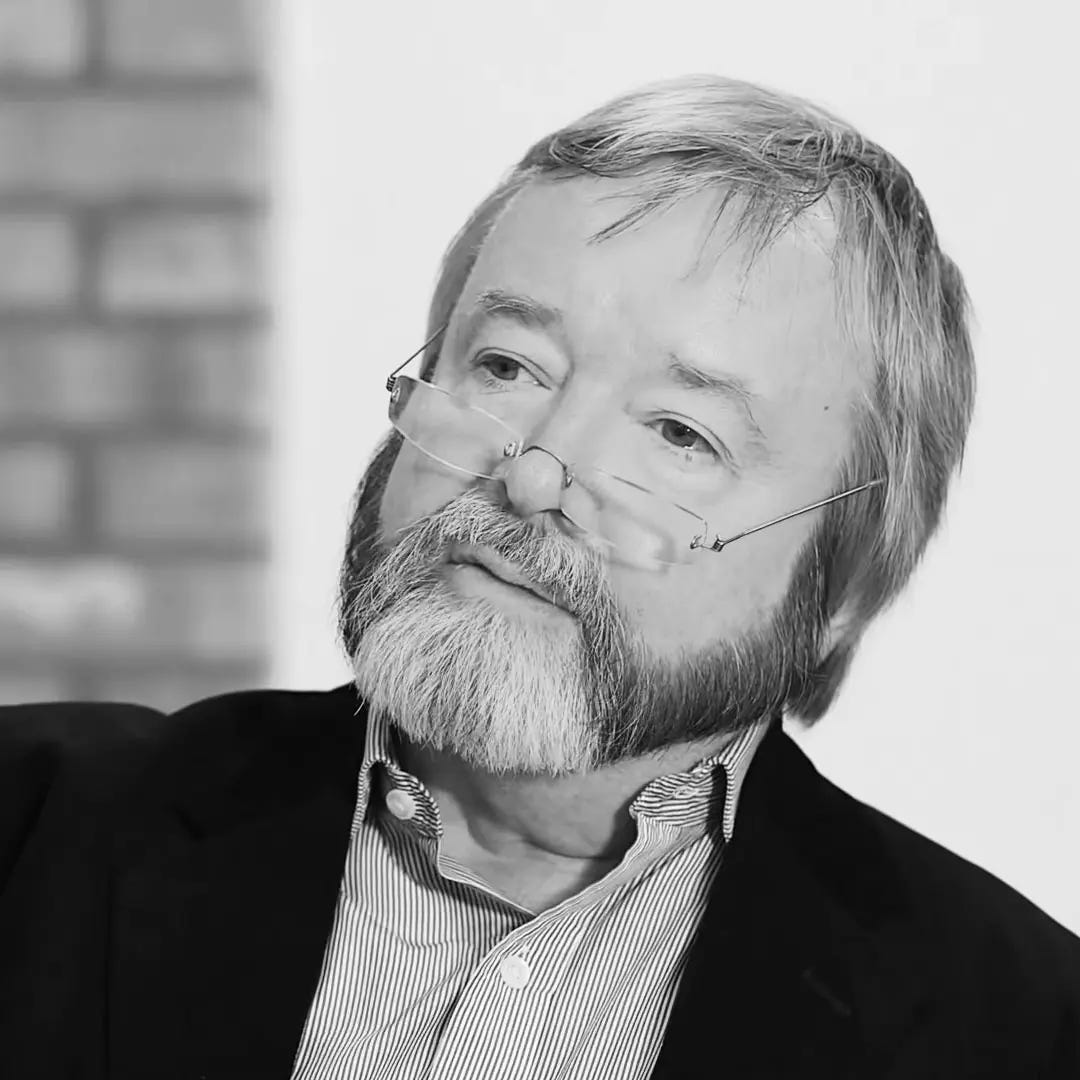

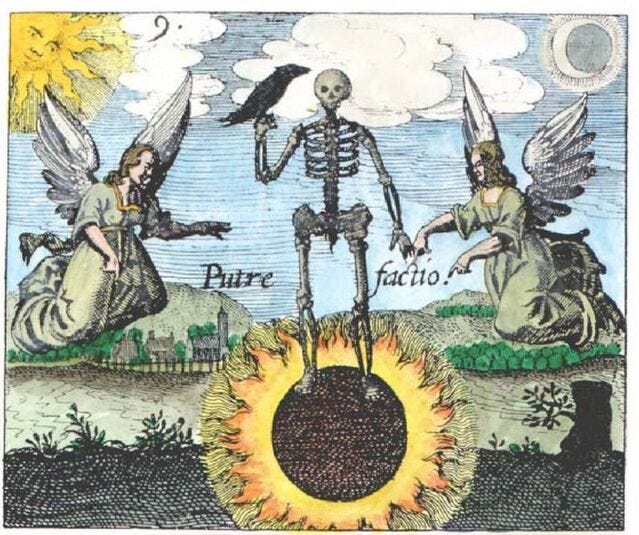
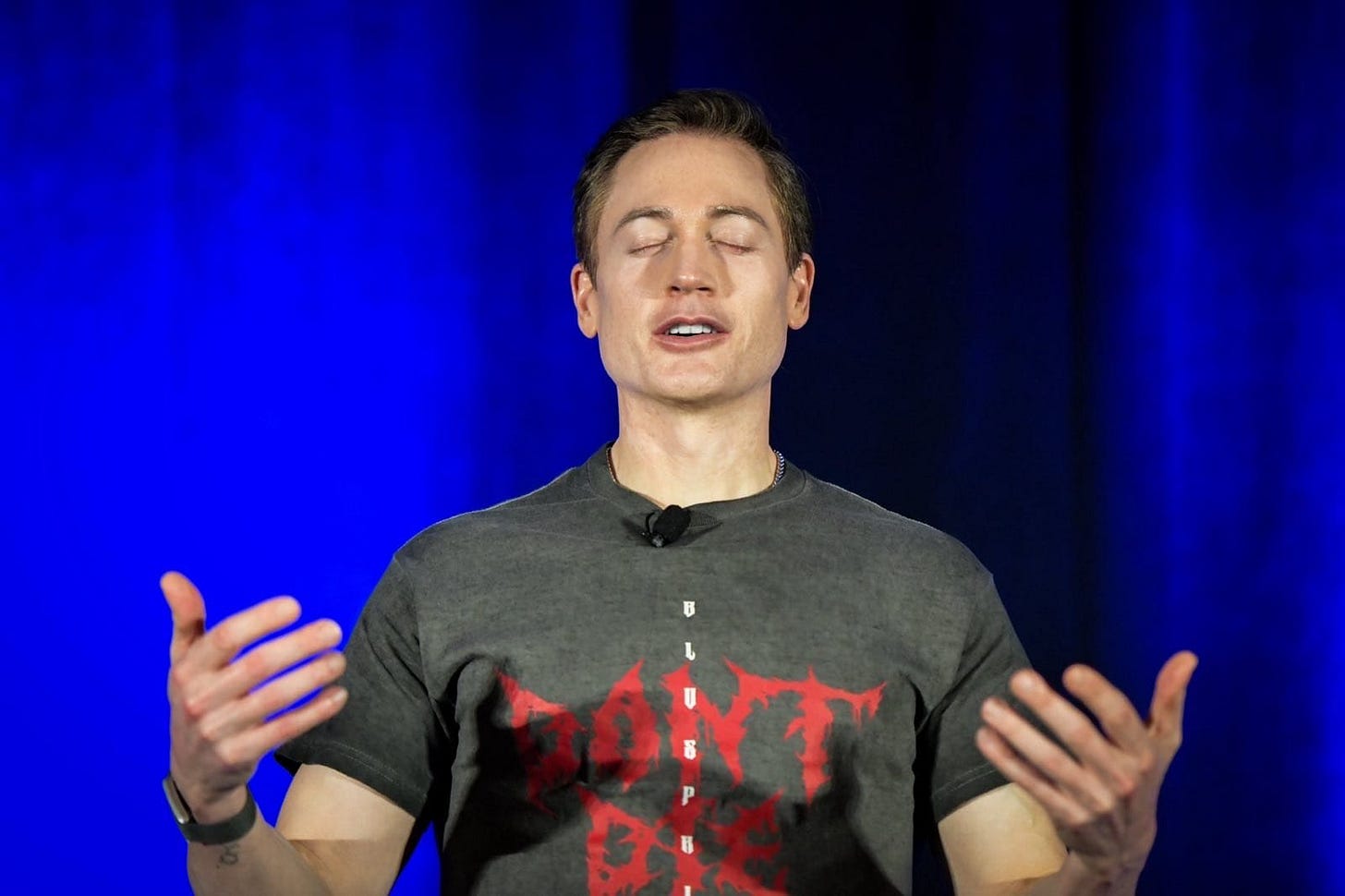
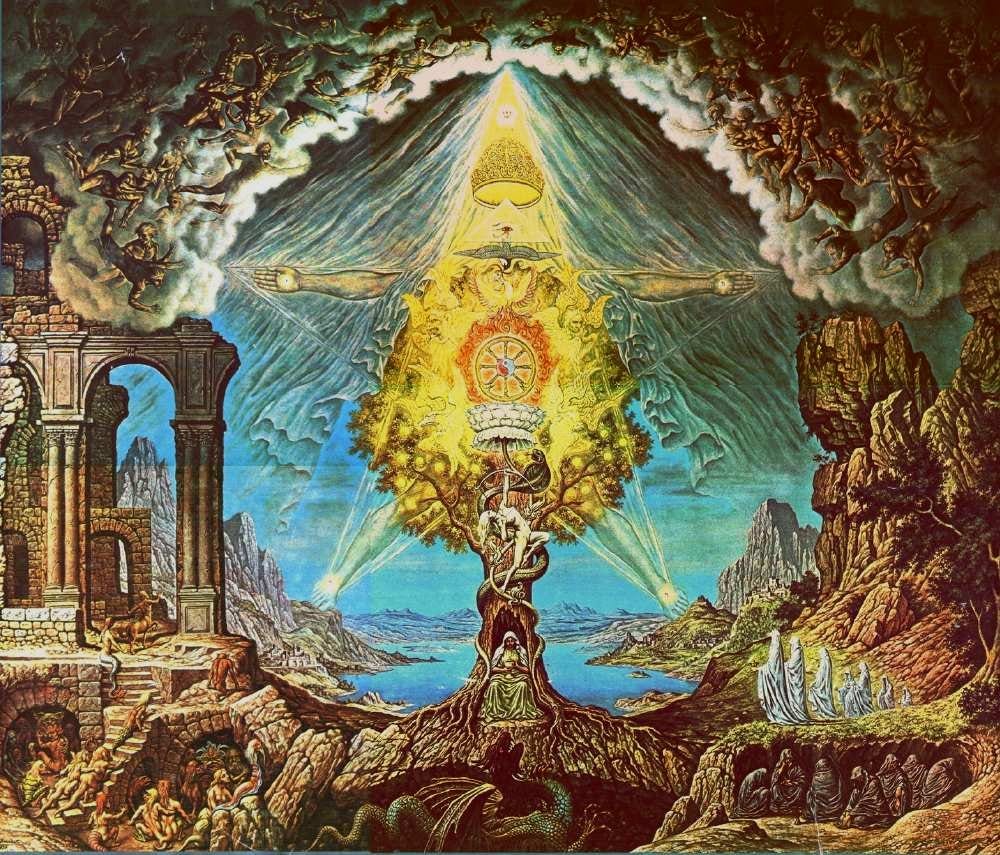
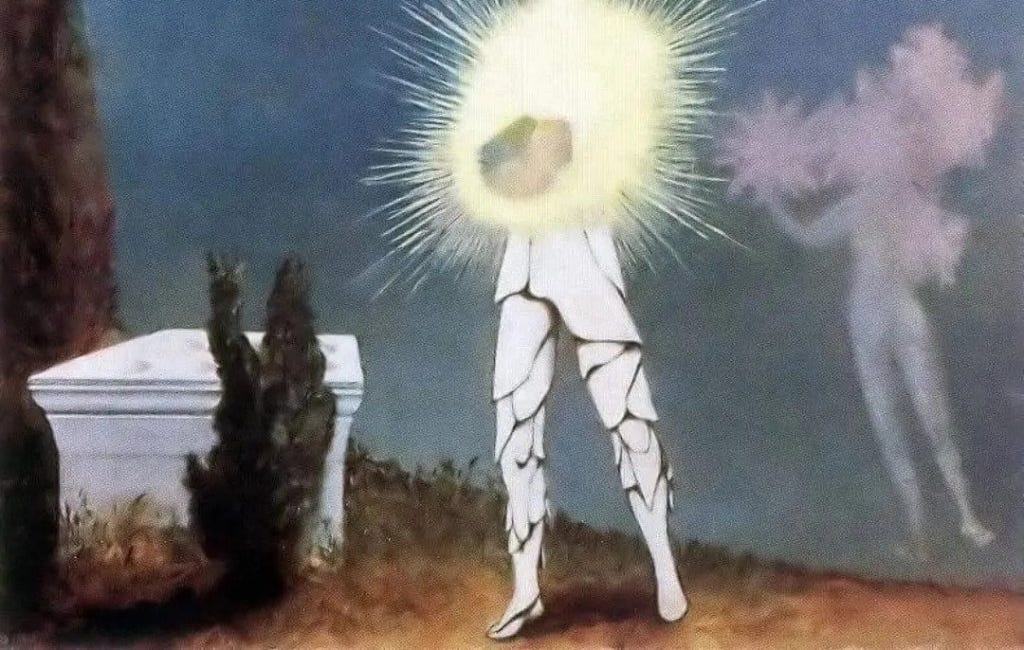
Elaine Pagels, Miguel Connor, etc., wrote (or edited) some great books on the history of the gnostic movement. Gnosis Chicago is a good website. You can also attend gnostic mass/service/discussion virtually and meet female, ordained, gnostic clergy (from the Stephen Hoeller school, Seattle) and other nice peeps. https://www.facebook.com/groups/55604320994
These are/were gnostic christians so you still get the Jesus as a messenger of light part (uncoupled from all the Catholic hierarchy crap) but they also worship Sophia, a mother goddess of wisdom, and other things considered heretic. It’s helped us with our worry and sadness over the current state of the increasingly dystopic soul-killing material world. Thanks Slick for a great article!
This was way more than an essay on Gnosticism. I’m 80 with a doctorate in philosophy and psychology. Reading this was like walking through my life journey. Add to it a profound Near Death Experience into formlessness with infinite consciousness awareness within infinity. Your description of the awakened infinite conscious awareness says we are playing in a similar sandbox. I don’t know my next steps yet but my heart-love is truly the guiding light.